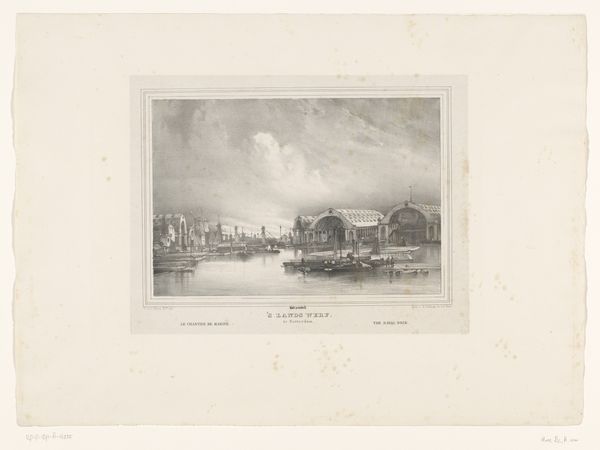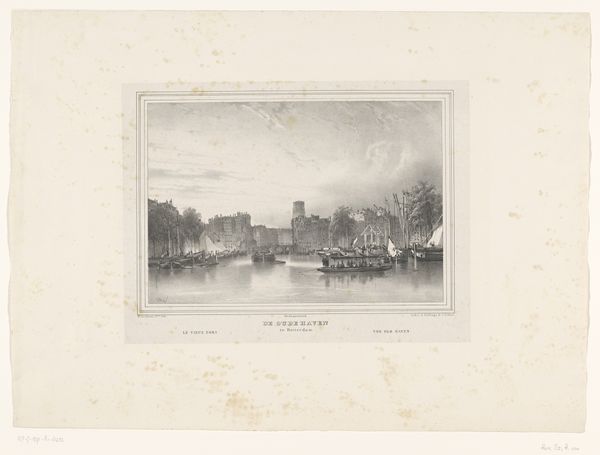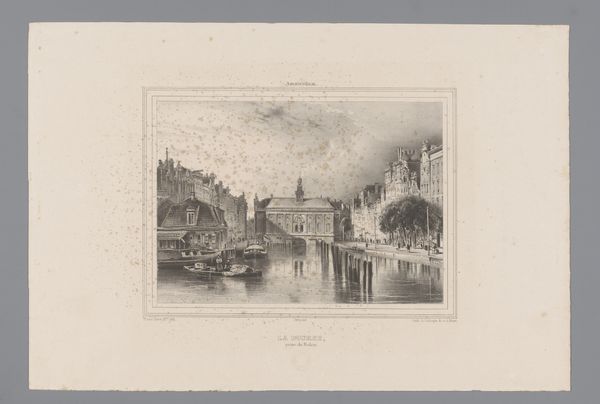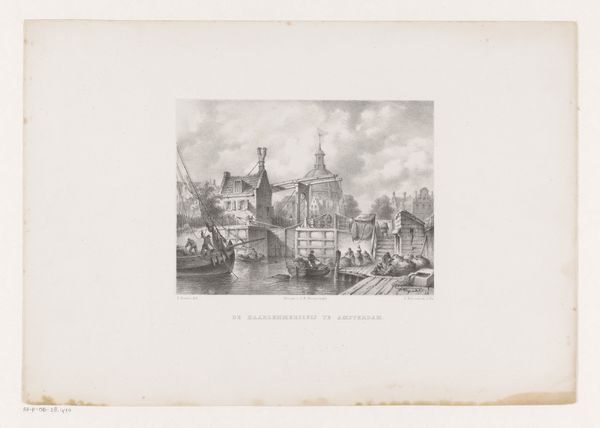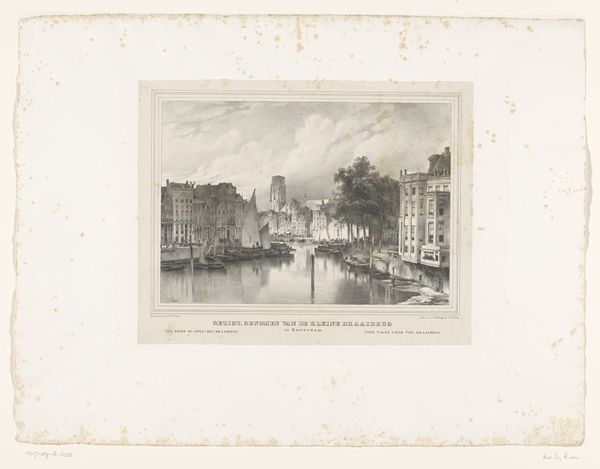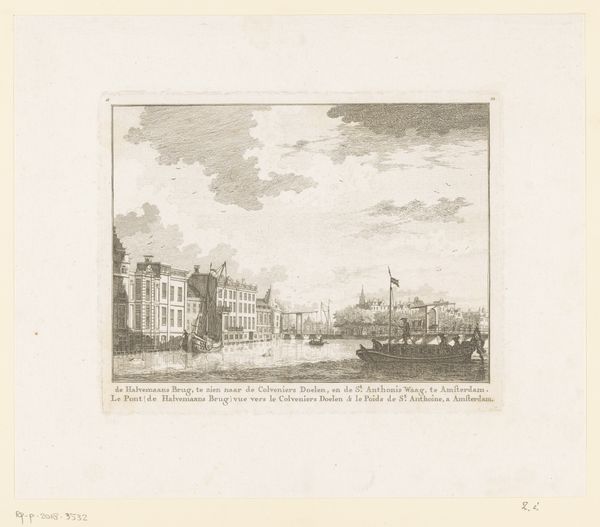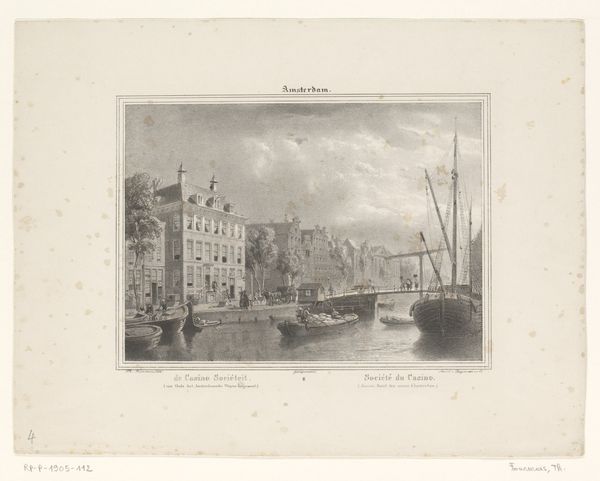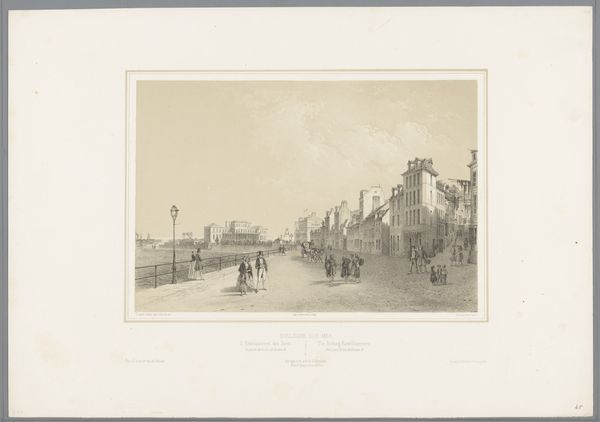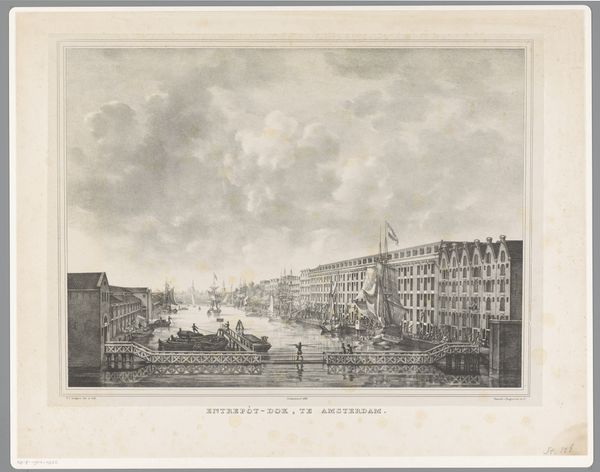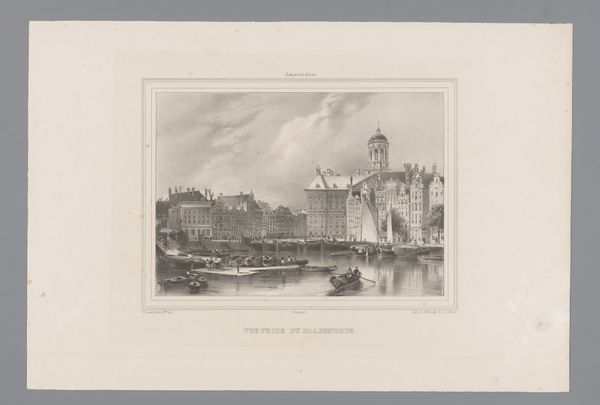
drawing, print, etching, paper
#
drawing
#
dutch-golden-age
# print
#
etching
#
landscape
#
paper
#
romanticism
#
cityscape
Dimensions: height 442 mm, width 577 mm
Copyright: Rijks Museum: Open Domain
Curator: This is a print from 1835, “Gezicht op de vismarkt te Rotterdam,” or "View of the Fish Market in Rotterdam" by Huib van Hove Bz, currently residing at the Rijksmuseum. It’s rendered as an etching on paper. Editor: My first impression is one of stillness despite the subject being a bustling marketplace. There's a quiet dignity in the classical architecture contrasted with the mundane activities of the fishmongers. Curator: Indeed, the image blends commercial activity with neoclassical idealism. We see the Beurs, or Exchange building, in the background – a clear symbol of Rotterdam's economic power, looming over the working-class individuals populating the foreground. This wasn't merely documentation; it was also a statement about civic pride and the role of commerce in the city's identity. Editor: Looking at it now, the dome of the Beurs seems almost like an eye, overseeing the market scene below. Perhaps the artist intended to subtly convey the watchful presence of commerce and governance within the daily life of Rotterdam. Fish markets themselves have historically served as more than just trade centers. Curator: Precisely, the fish market and spaces such as this one fostered a sense of community and the maintenance of societal norms through repetition and negotiation of rules for conduct, trade, and even the development of shared dialects or modes of communication between individuals. The imagery almost evokes an older age of mercantile values through careful composition, while the new commercial center rises above. Editor: Note the delicate use of line in the etching. Each boat, building, and figure is carefully delineated, contributing to the scene’s clarity, as if imbuing everyday activities with a certain moral and visual order. The boats mirror one another from the left to the right, framing the exchange itself in its purest essence. Curator: What this piece reveals is the increasing importance of documentation and depiction for urban environments undergoing economic change during the 19th century, a common strategy in European and Western city centers, as cities wished to showcase and broadcast both old markets and burgeoning industry and commercial activity. This etching served to further this development by emphasizing both aspects within a unified field. Editor: This piece certainly feels emblematic of that era, encapsulating both a sense of progress and perhaps a touch of idealized nostalgia for older systems of commerce. Curator: Definitely food for thought. Thank you.
Comments
No comments
Be the first to comment and join the conversation on the ultimate creative platform.
